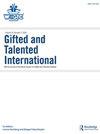Connecting creative coursework exposure and college student engagement across academic disciplines
Q3 Social Sciences
引用次数: 4
Abstract
ABSTRACT This study extends research on the effectiveness of creativity training and the importance of student engagement in higher education. Using data from the “Senior Transitions” topical module of the National Survey of Student Engagement (NSSE), responses from over 25,000 seniors at 266 different U.S colleges and universities demonstrate that exposure to creative coursework can predict student engagement in a variety of areas. Ordinary least squares regression models determined the effect of creative coursework exposure on NSSE’s established measures of student engagement: reflective and integrative learning, higher-order learning, use of learning strategies, collaborative learning, diverse discussions, student-faculty interaction, effective teaching practices, quality of interactions, and supportive environment. Results suggest that exposure to creative coursework is a significant positive predictor of student engagement, even after controlling for sex, transfer status, enrollment status, first-generation status, age, SAT/ACT, race/ethnicity, major, grades, percentage of online courses, institutional control (private/public), and institution size. Potential reasons for these patterns of results are discussed. Implications include updating curriculum and programming for greater exposure to creative assignments and activities across all major fields.将创造性课程展示与跨学科的大学生参与联系起来
摘要本研究扩展了对创造力训练的有效性和学生参与高等教育的重要性的研究。利用全国学生参与度调查(NSSE)“高年级过渡”主题模块的数据,来自266所美国不同学院和大学的25000多名高年级学生的回答表明,接触创造性课程可以预测学生在各个领域的参与度。普通最小二乘回归模型确定了创造性作业暴露对NSSE既定的学生参与衡量标准的影响:反思性和综合性学习、高阶学习、学习策略的使用、协作学习、多样性讨论、师生互动、有效的教学实践、互动质量和支持性环境。研究结果表明,即使在控制了性别、转学状况、入学状况、第一代状况、年龄、SAT/ACT、种族/民族、专业、成绩、在线课程百分比、机构控制(私人/公共)和机构规模之后,接触创造性课程也是学生参与度的一个重要积极预测因素。讨论了这些结果模式的潜在原因。影响包括更新课程和编程,以便更多地接触所有主要领域的创造性作业和活动。
本文章由计算机程序翻译,如有差异,请以英文原文为准。
求助全文
约1分钟内获得全文
求助全文

 求助内容:
求助内容: 应助结果提醒方式:
应助结果提醒方式:


